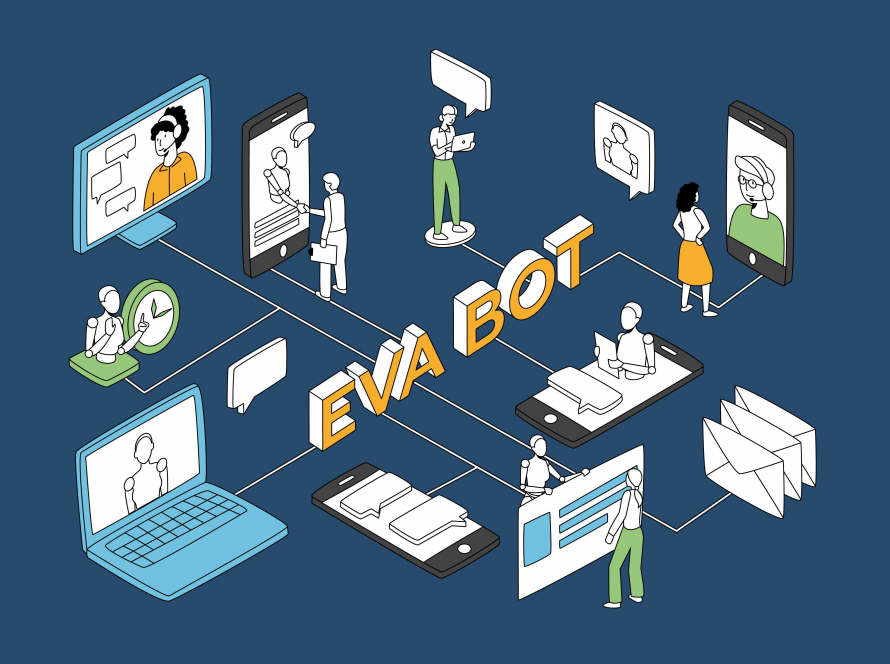As the Fourth Industrial Revolution digitises the Human Resources industry and calls for effective and purposeful talent management, companies are increasingly moving toward data-driven decisions to align HR Strategy and Business Objectives. HR metrics track and measure the performances and effectiveness of different HR aspects. It helps HRs to predict the future and correlate its influence on the overall organisation.
According to LinkedIn’s Global Talent Trends 2020 report, 73% of talent professionals believe that people analytics will be a top priority for their firm in the next five years. This can be confirmed by a 242% increased necessity of data analytics skills in HR in the previous five years. Although approximately half of the businesses believe they have well-organised data, just 39% believe they are adept at interpreting and generating relevant conclusions. The COVID 19 pandemic has further increased the importance of data and analytics in human resources.
Before beginning to use HR metrics to one’s advantage, a company must examine the metrics that are important to them. This will lay the foundation for using data analytics to correlate people agenda with overall company goals.
Here is a list of the top 15 HR/HCM metrics to be explored.
Talent Acquisition
1. Candidate satisfaction rate
The HR team can make use of this excellent metric to measure a candidate’s perception of a company’s hiring steps and their experience during the process.
Data for candidate satisfaction can be collected using a survey or by asking for feedback from candidates during and/or after the interview process. It is best to keep these surveys anonymous to get the most honest responses.
2. Offer acceptance rate
A company’s offer acceptance rate is calculated by dividing the number of offers accepted against the total number of offers formally shared with candidates. It can be further filtered to find the offer acceptance rate per recruiter, hiring manager, team, etc. Drop-outs after offers received, low rates for a particular team/manager, talent acquisition strategies and sources can be assessed by using this metric judiciously.
3. Diversity ratio
With the importance of diversity in hiring becoming more evident, companies can calculate the diversity metrics that are important to them, against many backdrops. Talent distribution in the hiring and selection can be classified into 4 different levels,
- Age, race, gender, and sexual orientation;
- Education, marital and parental status, and religious beliefs;
- Individual’s job level, tenure; leadership level
- Work habits, and communication style.
A company can further evaluate the diversity gap and bias in hiring processes by comparing the diversity dispersion in applications against the hired candidates. Using a digitised HR solution like EVA can help mitigate unconscious bias in the hiring process.
4. Workforce planning metric
Workforce planning metrics have emerged as a top focus during COVID 19. This comprises determining the supply and demand for a company’s talent availability, as well as placing the right people at the right place at the right time. Workforce planning metrics comprise:
- Current and Forecasted headcounts
- HC predictions for teams, location, roles, skills, level
Analysing this metric can help companies bridge the gap between “where we are” and “where we want to be”.
Check out EVA’s Talent acquisition metrics for a modern recruiter for an exhaustive list of metrics that are invaluable in the talent attraction and acquisition phase.
Employee experience and engagement
5. Employee satisfaction rate
Employee satisfaction has been the cornerstone of conversation in the HR industry. It serves as the foundation for employee productivity, corporate culture, staff retention, and, ultimately, business success. Several organisations perform targeted surveys and interviews to assess employee happiness against a variety of backgrounds. Amazon is ranked first on LinkedIn’s Top Companies (United States) 2022 list, which takes into account seven pillars of professional growth.
Employee happiness may be measured via surveys, interviews, meetings, polls, and other methods. Employee Net Promoter Score, or eNPS, is gaining prominence as a statistic for determining how employees feel about a firm, i.e., the employees who promote one’s company. It can have a value between +100 and -100. A positive score is regarded as excellent, whereas a number less than zero is considered a warning sign.
6. Absenteeism
According to Gallup’s research, highly motivated and engaged employees take 37% fewer sick days. Employee performance and productivity can be closely associated with absenteeism. Reasons for increased absenteeism can range from burnout, disengagement and dissatisfaction, and family and mental struggles, among others. If not addressed can have negative effects on employee morale. Absenteeism can be measured by dividing Workdays missed by the Total number of planned workdays.
7. Mobility ratio
Employee mobility in a company can be measured in terms of rank mobility, managerial mobility, or geographical mobility. This may be used to assess the capacity to promote or transfer employees within a company, as well as analyse internal mobility programmes. However, a more in-depth examination of the ratio is required to determine the explanation for high or low mobility metrics. A deeper look into how many employees are applying to the opportunities against employees getting selected or getting the opportunity to move across geographical borders. This may also be the reason for employee satisfaction issues and turnover, to name the top two.
8. Number of High performers and successors
Following the 9-Box Performance-Potential grid, employees in the top right corner who score high on both performance and potential are generally chosen to swiftly progress up the organisational levels since they can provide more value higher up the ladder. This grid is an easy way to assess the employees’ performance against their current and future potential. It is a helpful tool for succession management and identifying potential successors in the system. For proper succession planning, a company must first identify critical roles followed by successors for these roles derived from the 9-box grid or a similar tool. The ideal successors for each role may vary anywhere between 3 to 10 successors with varied readiness timelines (depending on the criticality and past turnover rates).
Employee performance and development
9. Training cost
Measuring time and money spent on training activities to enable employees to grow can be a very important talent management metric. Training spend can be defined as the number of days in training or the cost invested in training, filtered down to soft skills, technical skills, niche skills, new employee training, career movement training, coaching and leadership development to name a few. Depending on the size and feasibility of the company, training costs per employee may vary from an average of $500 – $1000 and 40 hours per year per employee.
10. Training evaluation
Popular training evaluation model like Kirkpatrick uses 4 levels of training evaluation:
- Reaction: Measuring learner satisfaction to understand if the learner happy with the training
- Learning: Has the learner acquired knowledge from the training, assessed through tests, questionnaires, observations and interviews
- Behaviour: Measuring learner’s application of the training in the real world
- Results: Whether the targeted outcome of the training program was achieved to support company objectives.
An additional step of calculating the ROI of the training has become popular with more prominence to learning and development in an organisation.
11. Promotion rate
The promotion rate of a company calculates the number of total promotions during a period divided by the number of employees. The promotion rate needs to be considered against industry rates for meaningful interpretations. With career growth and employee development in focus and the composition of millennials who consider promotions an important variable in their job satisfaction, metrics to calculate the promotion rate is important. Low promotion rates can be tied to regressive company culture, high turnover and employee career stagnation.
Turnover and Productivity
12. Time to Productivity
Measuring the average time taken for the new employee between employee’s joining and satisfactory productivity. This metric evaluates the effectiveness of a company’s onboarding process including role-specific training. The market average stands at a minimum of 6 months for an employee to become fully productive.
13. Attrition
Attrition, known as the rate at which employees leave the workforce over a given period, is the number of employees separated during a period divided by the average headcount during the same multiplied by 100. With the talent competition in the market, with unavailability and demand exceeding the supply of talent, it is wise for companies to watch closely for attrition rates. High attrition rates can be attributed to bad company culture, low employee satisfaction, decreased productivity, lack of career growth opportunities, etc., which are all considered vital for the success of a company. High attrition can also lead to huge costs for the company, for hiring, training, and knowledge sharing. A keen eye must also be placed to see high performers’ turnover and methods to reduce it.
Exit interviews can be home to invaluable data to tackle attrition. If used effectively, can pinpoint the exact reason resources leave an organisation and what can be done to avoid this. The difficulty to get accurate information is to use the data received to make meaningful insights with supportive evidence. Data can be broken down as the number of voluntary and involuntary attrition, reasons for attrition, tenure of employees, retentions caused, etc.
14. Revenue per employee
A company-wide revenue generated against employee headcount is calculated by dividing the total revenue by the total number of employees. This can be calculated against the industry benchmark and helps a company to strive to be more profitable and prudent with talent management.
15. Total cost of workforce
Total of all workforce-related expenses (included compensation, benefits and incentives and any other expenses incurred on full-time and gig workers in a given period). This statistic provides a more accurate view of your workforce cost and can assist you in making more educated workforce strategy decisions, particularly about talent acquisition.
EVA’s People Analytics platform can be your HR team’s guide to making data-driven decisions. Configure the HR metrics that matter to your company and our people analytics platform can provide real-time personalised data integrated from all your existing systems to build intuitive dashboards.




